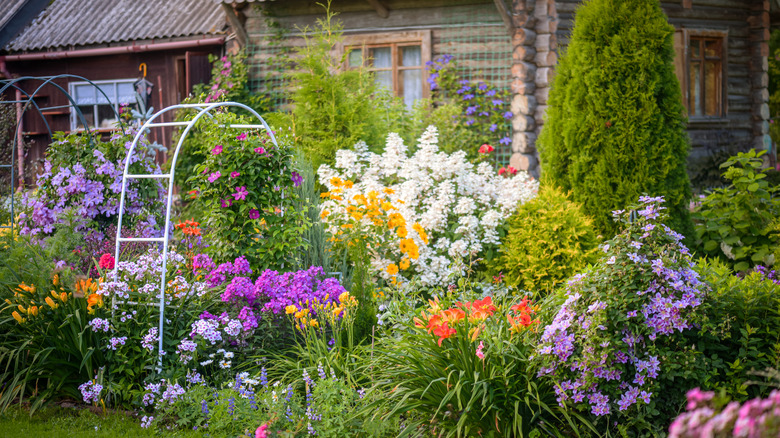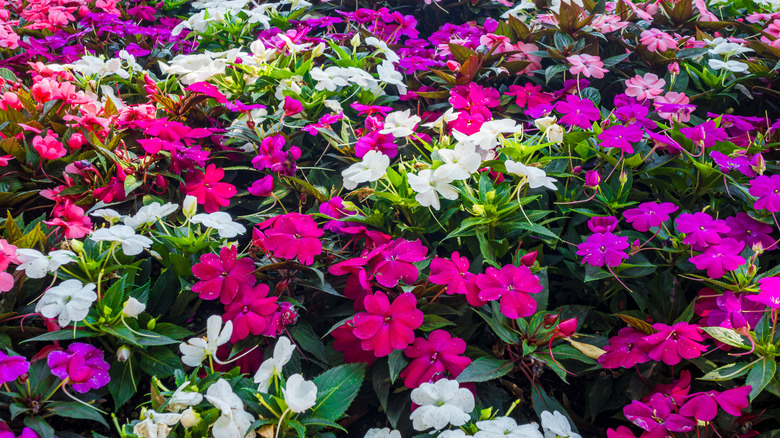The Shade-Loving Flower That Beginners Can Grow In The Garden For Colorful Blooms
Starting a garden in a shady spot might seem limiting, but it doesn't have to be. If you're new to gardening and want fast color without the stress, impatiens are one of the easiest flowers to grow, and one of the most rewarding. These low-maintenance annuals are tailor-made for beginners, thriving in partial to full shade while filling beds and containers with vibrant blooms. Their flowers come in a wide range of colors, including red, pink, white, coral, purple, and orange, making it easy to match any garden style. They're also incredibly flexible in how you use them, which is part of their widespread appeal in home landscapes.
Whether you're working with under-tree beds, shady borders, small patio containers, or growing them in hanging baskets, impatiens bloom quickly and blend beautifully with other plants. Different types offer options depending on your space. The classic Impatiens walleriana thrives in full shade, while hybrids like New Guinea impatiens tolerate a bit more sun and offer better resistance to diseases like downy mildew. However, New Guineas need to be watered a lot more frequently. Compact varieties like the Accent series are ideal for tidy displays, while taller types can fill in larger areas fast. All types use their bright blooms to attract pollinators like butterflies and bees, even in lower light.
How to grow and maintain impatiens
Impatiens flowers are easy to grow as long as you give them what they love: shade, moisture, and rich soil. They are hardy in USDA Hardiness Zones 10 and 11 and thrive outdoors in partial to full shade, especially in spots with soft morning sun. They tolerate deep shade, but may bloom less and grow a bit leggy. Indoors, they adapt well when placed near an east-facing window or under grow lights. Whether planted in beds or containers, they need rich, well-draining soil and consistent moisture.
If the soil dries out, impatiens wilt quickly. On the other hand, too much water risks root rot, so good drainage is crucial. Plant them outdoors only after the last frost. However, you can start them from seed indoors 6 to 10 weeks before your final frost. Space impatiens 8 to 12 inches apartand feed them every two to three weeks with a diluted, balanced fertilizer. They only take a few months to bloom and continue flowering steadily from spring through fall.
Most modern impatiens shed their spent blooms naturally. They rarely need to be pruned, making them a perfect low-fuss flower for beginners, whether planted indoors or outside. Keep in mind that impatiens can develop problems like downy mildew, spider mites, or botrytis blight if they're overcrowded or overwatered. Downy mildew is the most serious, often causing plants to drop their leaves quickly. To prevent it, water at the base of the plant (keep the foliage dry) and make sure there's good air circulation around the plants.

